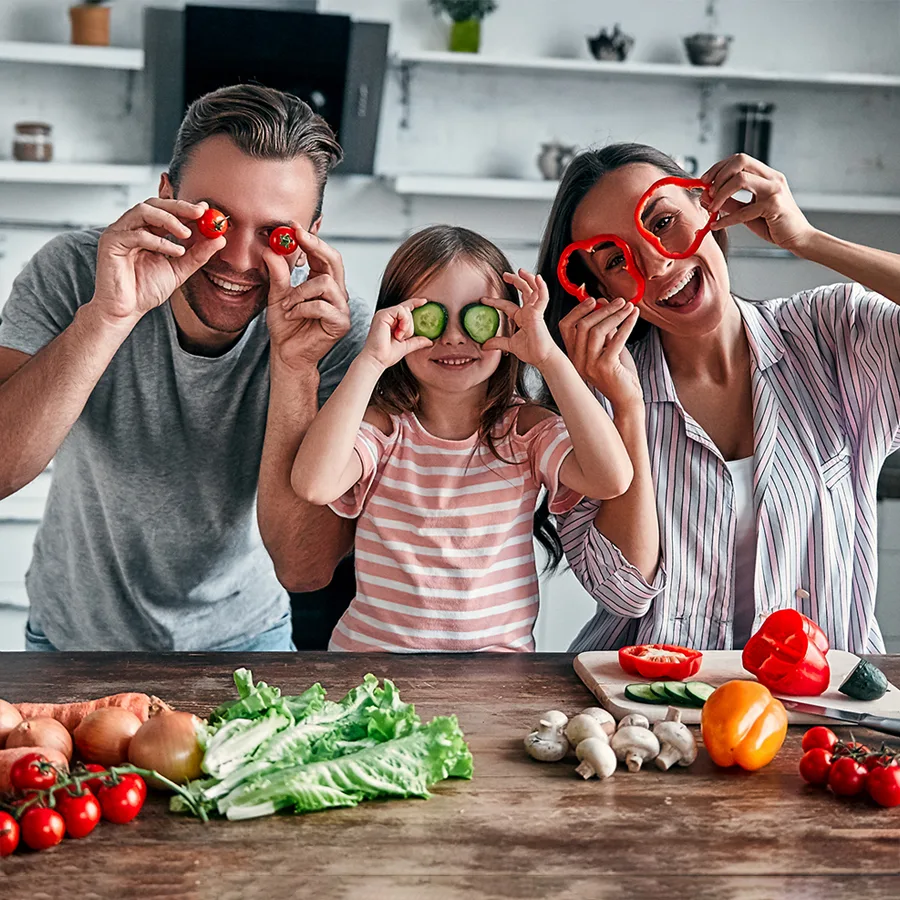Children learn so much from participating in everyday life activities, like cooking dinner at home. For children, cooking is a chemistry class and a hands-on arts-and-crafts class with results you can eat. They love to measure, mix, stir, and knead. Older children can be taught how to safely chop ingredients. Kids can practice reading the recipe, following directions, and seeing why each step contributes to the tastiness of the resulting food. Cooking is also an important life skill that children will benefit from knowing as they grow and become more responsible for their own self.
How Children Can Help in the Kitchen
Teaching children to cook starts from simple skills, all the way to those that may be more dangerous. Children as young as toddlers can help with basic tasks while older children can learn to work near heat and knives after they learn the basics.
- Measuring – Toddlers and older can learn to use measuring spoons and cups to measure ingredients.
- Mixing Bowls – Toddlers and older can help to mix ingredients with a wooden or silicone spoon and a mixing bowl.
- Folding and Kneading – Ages 5 and older can learn to fold ingredients and handle dough.
- Stirring and Flipping in the Pan – Children as old as six can stir and flip ingredients in a hot pan with supervision.
- Reading the Recipe – As soon as children can read, they can help you read and follow the recipe.
- Chopping Ingredients – At around age 7, children are mature enough to learn basic knife skills and chop ingredients with supervision.
Safety Measures to Remember
When cooking with children, safety is paramount. Provide supervision and help your kids to maintain safety procedures at all times.
- Supervision is a Must – Always supervise children in the kitchen, especially when heat or knives are nearby.
- Learn Skills in Order – No matter how old a child is when they start in the kitchen, start with basic skills and teach them skills of increasing skill or danger in order. First mixing, then flipping in a hot pan, then knife work.
- Remind Children of Safety – Remind your children how to be safe and careful, frequently.
- Demonstrate Kitchen First Aid – When small injuries happen, show and explain how to treat burns and cuts immediately.
- Food Safety – It’s imperative to know the dos and don’ts of food safety. Make sure your child washes his or her hands before touching the food or cookware, and especially after handling raw meat or eggs. Raw and cooked foods should be kept separate, and separate utensils should be used when handling each. Leftovers should be allowed to cool before placing in the fridge: rice, for example, is a particular food that need to cool to a certain temperature to ensure bacteria doesn’t grow.
- Check Everything Before Eating – Check that all food is fully cooked (and free of accidents like bones and egg shells) before eating. Food should be cooked thoroughly; teach your child how to use a meat thermometer and the temperatures for each meat.
When deciding which snacks or meals to create with your child, consider USDA’s recommended dietary guidelines. With childhood stages come a need for different nutrients, and more food as growth continues. MyPlate provides recipes based on life stage. Use the provided resources to teach your child about nutrition and what a balanced meal looks like, all while having them help in the kitchen.

